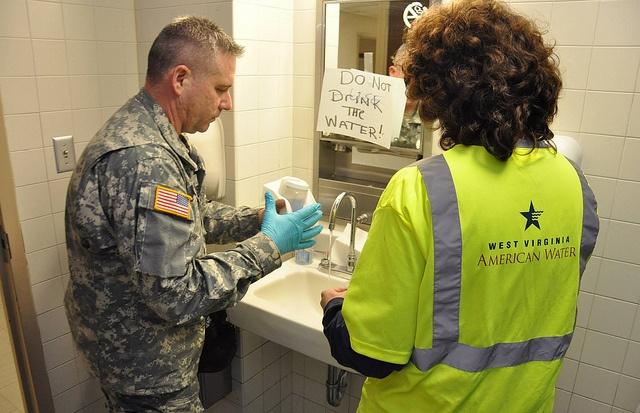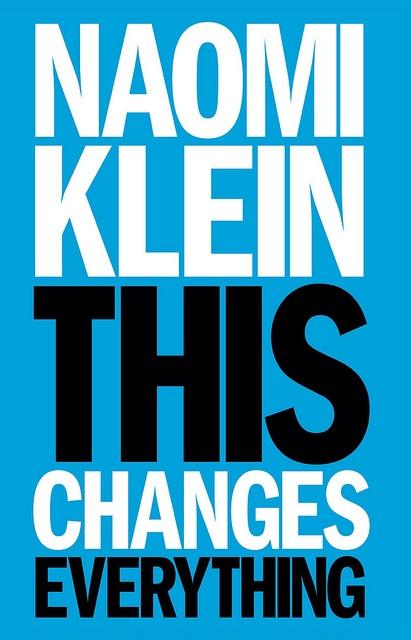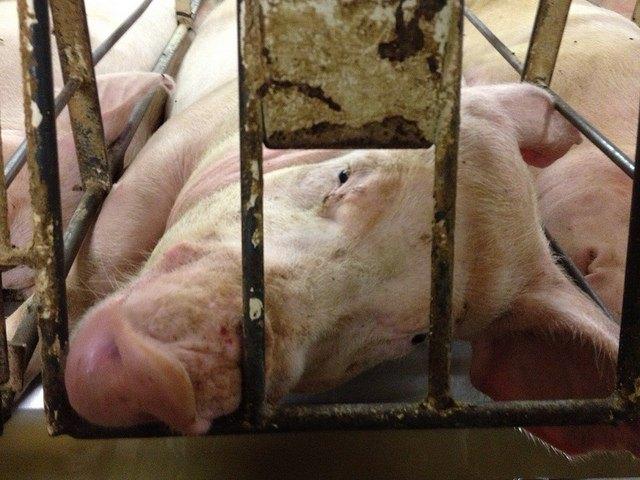Jacques Maire joins Vigeo executive committee


Former executive at the French Ministry of Foreign Affairs and International Development Jacques Maire has joined CSR rating agency Vigeo's corporate executive committee as director of strategy and development.
Maire started his career as an officer of the French state as Chief of Staff for the French Minister of Environment and Territory, as well as Delegate for European and International Affairs for the Ministry of Employment and Solidarity. He then spent 10 years in the Axa Group as md for Southern Europe and the Mediterranean region, the Middle East and Latin America before being appointed md of Axa in Hungary.
In 2012, he managed the Corporate and International Economy Division at the French Ministry of Foreign Affairs and International Development in order to implement the strategy of economic diplomacy prompted by the new government.
Maire commented: "I am looking forward to joining Nicole Notat and the team at Vigeo: the leading agency in evaluating corporate responsibility that has attained an undeniable legitimacy in Europe."
Call for higher take-up of Investing in Integrity standard


More businesses should sign up to the Investing in Integrity (IiI) charter mark to reassure the public that they are trustworthy, Lord Mayor, Alderman Alan Yarrow has urged.
“One of the direct results of the economic crisis was a loss of trust in the financial services sector. Since then the industry has spent a lot of time and effort trying to restore this and integrity has to be at the heart of that," he said.
“Addressing these negative perceptions is an important step for these firms but it is not the be all and end all. Simply saying “trust us” or “trust me” is no longer sufficient, if indeed it ever was, and a more transparent and open approach is required to convince today’s sceptical public.”
The Lord Mayor was addressing an audience at London's Mansion House at the relaunch of the IiI charter mark.
Founded in 2012, the joint Institute of Business Ethics and Chartered Institute of Securities & Investment (CISI) initiative enables an organisation to reassure its key stakeholders that its business can demonstrate a commitment to address conduct and behaviour risk and act with integrity at all times. The strength of the IiI assessment framework lies in the fact that it tests an organisation’s ethical conduct against its statements of values to ensure those values are properly embedded. Its aim is to help identify whether or not a company is truly living up to its values, from the boardroom to the shop floor.
Sam AlJayousi, group compliance manager at Carillion plc, which qualified for the mark last year, said: “Investing in Integrity is a unique chartermark where it rigorously tests an organisation’s ethical standards through formal audit and assessment of the organisation’s own people and what they say about it. In the course of the process some 35 senior people were interviewed, more than 4,500 responded to an online survey, including people at more than 20 of Carillion operational sites across the globe. Carillion is proud of its achievement being the first company to achieve the III charter mark across the support services sector.”
Since its launch only five companies have passed the standard with three organisations currently undergoing the process.
Elk River Pollution Indictments Announced in West Virginia


Last month, the U.S. Attorney General's office indicted four owners and operators of a chemical company that was accused last January of polluting the drinking water of 30,000 residents in Charleston, West Virginia.
Freedom Industries CEO Gary Southern was charged with 13 counts of violation of the Clean Water Act and intent to defraud and give false oath, while three other executives, Dennis P. Farrell, William E. Tis and Charles E. Herzing, each were charged with three counts of violating U.S. environmental laws. All four were indicted for failing to ensure that the facility was operated in a "reasonable and environmentally sound manner when they knew or should have known of the facts and circumstances constituting Freedom's negligence."
Elk River pollution charges
The indictments relate to a chemical leak that was discovered on Jan. 9 of last year. It was determined that some 10,000 gallons of the toxic chemical 4-methylcyclohexane (MCHM) had leaked out of a holding tank, breached a dike and flowed into the Elk River. The breach forced the state to impose a "do not use" ban for customers of the adjacent American Water Co., which sourced its water from the Elk River.
According to a 37-page indictment, the company's negligence included:
- failing to properly maintain the containment area at the Etowah County facility and to make necessary repairs;
- failing to maintain suitable spill prevention materials and equipment available; and
- failing to ensure stormwater and groundwater pollution plans were maintained, both of which were required by law.
The indictment also found that the corporate officers had approved funding for "only those projects that would result in increased business revenue for Freedom or to make immediate repairs to equipment ..." The Environmental Protection Agency was able to show that, in one instance, repairs were done only because the EPA had made an unexpected visit and ordered the repairs to be done.
The four defendants have been charged with
- The violation of the Clean Water Act
- Unlawful discharge of refuse matter
- Negligent violation of permit condition
Scheme to defraud in bankruptcy
Southern was also charged with 10 counts of scheming a) to defraud creditors following Freedom's bankruptcy filing last January b) to defraud by interstate wire and c) by making a "materially false oath and account" to investigators about the length and role of his involvement in Freedom Industries.
If convicted, Farrell, Tis and Herzing face a maximum sentence of three years in federal prison, while Southern could face as many as 68 years in prison. All four were arrested and have pleaded not guilty to the charges. Farrell, Tis and Herzing each posted bail of $10,000, while Southern posted bail of $100,000. Trial is to begin March 10.
Residents still wary of effects of spill
Last Friday, the city of Charleston marked the one-year anniversary of the water crisis with a city-wide celebration of workshops, film screenings and a candlelight vigil. The message of the celebration could be said to be as much for the rest of the country as for the residents whose city had effectively been closed by the tap ban: Charleston's crisis is over and business is back to normal.
And for many it is. Only seven months earlier, a resident survey suggested that as many as two-thirds were still afraid to drink the water, troubled by water tests that suggested the chemical MCHM was capable of breaking down into carcinogenic substances like formaldehyde in water pipes. While other experts discounted the test results, none had been able to explain why formaldehyde was appearing in tap water days after the spill.
Today, however, residents' faith in the water system seems to be improving. Restaurants in the Charleston area, which less than a year ago were operating off of bottled water and struggling financially, are now reporting higher sales. Like many residents in the area, they admit that the crisis taught them a valuable, if not unsettling, lesson: Tap water or no tap water, they now keep a healthy supply of bottled water in storage -- just in case.
Image credits: WV National Guard
Top 10 Social Innovation Trends of 2015


By Joi M. Sears
We get it, your inboxes are jam-packed with must-read trend predictions for 2015, and no doubt some of them are right on the money. We can all feel the shift: This year will be a game-changer, especially in the field of social innovation. If we want to be ahead of the curve, we have to be creative, forward-thinking and incredibly innovative when it comes to designing new products, services and brands.
This list is all about taking the top 10 innovation trends of 2015 and transforming them into actionable opportunities that you can run with and profit from in the year to come.
1. Instant skills
2015 is all about the rise of the “prosumer” (professional consumer) who cares less about what they have or buy and more about what they can do or create. Just as Instagram created an army of instant art photographers, the best products and services of the coming year give prosumers the instant knowledge and skills they need to produce professional quality output minus the learning and/or time barriers. In this case, it is all about the destination -- not the journey.
Example: SeedSheet offers aspiring gardeners a simple ‘plug and plant” approach.
Q: How can you give prosumers the INSTANT SKILLS they will demand in 2015?
2. Fast laning
In 2015, consumers who are more starved for time and accustomed to total control will expect quicker more streamlined service, especially from the brands that they extend their loyalty towards. Winning brands this year will design FAST-LANING solutions that benefit all customers by decreasing on-site wait times and removing time-sensitive customers from the slow lanes.
Example: In 2014, Starbucks and Taco Bell announced a new order ahead function for their apps enabling customers to place and pay for orders in advance.
Q: What are the ways in which you can streamline service for your most loyal customers?
3. Fair splitting
Those planning to simply accept mobile payments in 2015 are falling behind the curve. FAIR SPLITTING, and the use of new forms of real-time tools and data will help consumers seamlessly share costs, not just for products but for services and experiences as well.
Example: Lyft Line is a platform which allows users to save up to 60 percent by opting to have their ride pick up other passengers traveling along a similar route.
Q: How can you turn the moment of payment into a moment of pleasure for your customers?
4. Internet of sharing things
This trend it all about new connections, new opportunities and new behaviors. Last year we saw social innovators putting basic human needs at the center of their initiatives. Here we see the Internet of Caring things meet the Internet of Sharing things. As more objects become connected, we find new ways of deriving value from them which increases the possibility for consumers to share access.
Example: Breather, a space-sharing service which allows people to find unused urban spaces to rent for work or relaxation.
Q: How can your brand offer shared value/access, and also how you might be able to take advantage of shared access opportunities in your area or field?
5. Branded government
2015 will be the year for progressive brands to initiate, undertake or support meaningful civic transformation. This year, forward-thinking brands will step up to the challenge of creating real, meaningful change in the civic arena.
Example: Easy Taxi, a mobile app which, in response to the Ebola virus in West Africa, offered Nigerian cab drivers lessons on how to diagnose and prevent the disease.
Q: How you can you, either through partnerships or by working directly with the community, effect real and lasting positive social change?
6. Post-demographic consumerism
People of all ages and in many markets are constructing their own identities more freely than ever. As a result, consumption patterns are no longer defined by traditional demographic segments such as age, gender, location, income, family status and more. Nowadays, successful products, services and brands transcend their initial demographics almost instantaneously.
Tip: Never stop scanning all demographics for relevant new innovations.
7. Currencies of change
In search of wellness, strength, new skills, knowledge and more, this year's consumers will embrace device-fueled rewards that incentivize improving behaviors. CURRENCIES OF CHANGE are personalized rewards, incentives and discounts that help consumers overcome the inconvenience, cost or just the oh-so-human inertia that so often prevents self-improvement.
Example: McDonalds’ and Coca-Cola’s BFF Timeout app makes taking digital breaks more interesting by offering rewards, such as trips to international destinations, to those who spend more time with friends.
Q: How can wearable devices and smartphones enable your customers to earn CURRENCIES OF CHANGE?
8. Sympathetic pricing
Brands are constantly telling consumers that they care, but most consumers don’t believe them. Now consumers are challenging brands to put their money where their mouth is. In 2015, more brands will offer a variety of imaginative discounts that relieve lifestyle pain, offer a helping hand in difficult times or support a shared value.
Example: PareUp allows New York-based restaurants, coffee shops and grocery stores to offer soon-to-be-wasted food at a discounted price.
Q: How (and where) will you implement a SYMPATHETIC PRICING strategy in 2015?
9. Robolove
It’s actually more than a sci-fi fantasy: Many consumers will have their first face-to-face encounters with robots in 2015. Smart business will be planning not just how robots might decrease their costs, but free up their human employees to focus on more engaging, valuable tasks and also increase customer satisfaction.
Tip: Have a little fun with this one: If you could design a robot to handle your most mundane tasks, what would it look like and do?
10. Brand stands
In 2015, winning brands will take a stand and start contentious, painful and necessary conversations. These daring brands will make real, tangible brand sacrifices for people, society and the planet. When it comes to the environment and making the world a better place, many consumers are setting a more stringent standard for brands than they are for themselves.
Q: What will your brand take a stand for in 2015?
Credit: trendwatching.com
Image credit: Canned Tuna, Flickr
Joi M. Sears is a brand strategist, social innovator and creative entrepreneur, the Founder and Creative director of Free People International, a social enterprise which specializes in offering creative solutions to the world’s biggest social, environmental and economic challenges through the arts, human centered design and social innovation.
Talk to the Hand: Engagement With Fossil Fuel Companies Offers Little Promise


Editor's Note: This post originally appeared on the Clean Yield Asset Management blog.
By Shelley Alpern
As more and more institutions face pressure to divest from fossil fuel companies, some are looking to shareholder engagement as an alternative. Decades of such engagement, however, have produced strikingly little result.
As a long-time shareholder activist, I’ve spent more time than I can calculate filing shareholder proposals and engaging in conversation with fossil fuel companies, often in collaboration with major pension funds with large positions in such companies. I’ve engaged with ConocoPhillips, BP, Anadarko, Apache, Royal Dutch Shell, Energen and ExxonMobil on topics including carbon emissions, hydrofracking, biodiversity and human rights.
My takeaway from these efforts, along with a lingering concussion from too much cranial contact with brick walls, is that the time for polite conversation is over.
The Intergovernmental Panel on Climate Change has warned that without a game-changing effort over the next 15 years, we will face catastrophic climate change. We must learn to live within a “carbon budget” that is now exceeded by nearly fivefold by the proven oil and gas reserves on the books of global oil companies. Most of these reserves must be left in the ground.
It’s time for investors to shake off their cognitive dissonance, admit that the core business model of fossil fuel companies has to be abandoned and take meaningful action. There was a time when shareholders who filed proposals and asked tough questions at shareholder meetings were at the cutting edge of a stodgy field. But the ground has shifted in two critical ways.
First, groundbreaking analyses by the Carbon Tracker Initiative (CTI) have shown in illuminating mathematical detail exactly how untenable the business models of fossil fuel companies are. CTI is the group that first popularized the concepts of carbon budgets and unburnable carbon. Its latest analyses identify which gas and oil projects are vulnerable to stranding when their high costs cannot be recovered, as is now happening due to the collapse of oil prices. As they discuss here, stranded assets are no longer hypothetical; Total, Shell and Statoil shelved massive oil sands projects in the past year, and BHP Billiton and Rio Tinto rejected new thermal coal projects. In December, Goldman Sachs identified almost $1 trillion in assets at risk with Brent crude prices below $70 per barrel.
The second change is the emergence of a broad-based climate change protest movement powerful enough to turn out 400,000 in the streets of New York City last September. This growing movement has shifted the political calculus on fossil fuel divestment. Only three years ago, choosing not to invest in fossil fuel companies was an act of conscience with no social, political or market impact. But as a collective strategy, it has proven the single most effective means of keeping climate change on the literal and metaphorical front pages where it belongs.
Shareholder engagement works, except when it doesn’t
Institutional investors and asset owners owe it to themselves to understand when engagement works and when it doesn’t.
On the whole, shareholder engagement has an admirable track record. Its practitioners can take credit for many achievements: increased disclosure of corporate political spending; reduced waste, pollution and water usage; greening supply chains; broad adoption of inclusive nondiscrimination policies; and greater diversity on corporate boards. Not to mention the anti-apartheid campaigns of the 1980s.
Engagement succeeds when we can make a persuasive case that change will enhance shareholder value, reduce business or reputation risk, or both. Ethical imperatives rarely carry the day on their own.
Engagement will fail when a company with flawed policies or practices perceives them to be unalterable. As engagement with tobacco companies demonstrated, it also will not work when the goal is to change the core business model of a company.
It once could be argued that fossil fuel companies’ core activities were, on balance, beneficial to society (particularly if the person making the argument lived upstream). But with the two-minute warning having been sounded in the climate endgame, fossil fuel companies are now as lethal as tobacco companies. It’s simply inconceivable that fossil fuel executives will – within the urgent time frame – come to see the write-off of 80 percent of their collective assets as an enhancement of shareholder value or an act that will reduce business risk.
Harvard president Drew Faust has argued that divestment is a hypocritical act because society relies upon fossil fuels for energy. But while it is a given that we are all addicted, only the fossil fuel companies have a continuing and vested interested in the addiction. Financing the addiction for the sake of short-term profits amounts to collusion in our self-destruction.
Not a lot of there there
Let’s look at the track record of shareholder engagement with fossil fuel companies.
It’s been 23 years since the first climate change proposal was filed at a fossil fuel company. Using conservative estimates based on records kept by the Interfaith Center on Corporate Responsibility, at least 150 such proposals have been filed at fossil fuel companies since, and at least 650 climate proposals and dialogues on climate change have taken place at non-fossil fuel companies.
Space limitations preclude a detailed inquiry into these engagements, so let’s take a snapshot look at the most recent efforts and where things stand as of right now.
In late 2013, 77 institutional investors with more than $3 trillion in assets called on 45 companies to assess the potential for operational assets to lose value if carbon regulations become stricter and if competition from renewables takes market share.
Most coal and electric power companies didn’t provide the written responses requested. Most oil and gas companies did respond, but none acknowledged the existential threat to their activities or the need to scale them back. As former SEC Commissioner Bevis Longstreth observed, ExxonMobil not only denied that any of its reserves could become stranded, but also stated that it is “confident that future reserves, which it intends to discover and develop in quantities at least equal to current proved reserves, will also be unrestricted by government action.” With this report, Longstreth concluded, “ExxonMobil has thrown down the gauntlet after slapping it hard across the collective face of humanity.”
Two successive waves of “carbon asset risk” shareholder proposals followed this initiative, but have done nothing to budge the denialist positions held by their targets.
Consider the results of a 2014 Ceres study analyzing the greenhouse gas reduction activity undertaken by 29 leading oil and gas companies. Only five disclosed any direct investments in renewable energy technologies. Almost half disclosed efforts to reduce GHG emissions from their own operations, but little progress has been made in reducing emissions from their core products, which dwarf operational emissions, because little can be done. For fossil companies, this may be the weirdest plot twist in the history of commercial activity, but there is no way around it.
In contrast, the Ceres study found that 71 percent of non-fossil fuel companies have taken steps to reduce emissions. This remains ripe ground for engagement, with good likelihood of success.
For investors, a third way
Some asset owners are keeping divestment advocates at bay by arguing that selling off fossil fuel stocks will cause them to lose their “place at the table.” Setting aside for the moment that many making this argument have little or no track record of engagement, this position is simply incorrect.
Beyond the binary choice of engagement or divestment, there is a third way: Institutions can substantially divest and still keep a seat at the table. Only a very small amount of stock is required to file a shareholder proposal, and little effort is required to co-file a proposal submitted by another shareholder. Divesting of fossil fuels while retaining just enough to keep filing proposals was the approach adopted by the Unitarian Universalist Association in 2014. This is also the approach long taken by my firm, Clean Yield Asset Management. It is the clearest way we know to unequivocally reject the moral failure and investment risks inherent in fossil fuel extraction, without losing all voice.
But let’s be clear. In the dire situation we face, the opposite of voice is not an absolute silence. Divestment is a silence that speaks volumes.
Image credit: Flickr/fibonacciblue
EICC and Electronics Industry Promise to Fight Forced Labor in Malaysia


The electrical and electronics sector is the top manufacturing industry in Malaysia, providing almost one-third of the country’s exports and employing 27 percent of its workforce. The Malaysian electronics industry, which relies heavily on migrant workers, is also rife with abuse. One study suggests that 28 percent of workers were trapped into forced labor, and another 46 percent were on the “threshold” of finding themselves in a forced labor situation.
To that end, the Electronic Industry Citizenship Coalition (EICC), an NGO focused on supply chain sustainability within the electronics sector, announced it will conduct audits and work with Malaysian government agencies to halt what has become a massive human rights tragedy.
Founded in 2004, the EICC was launched by a small group of electronics manufacturers that have a goal to adopt industry-wide standards covering environmental, social and ethical issues within the industry’s entire supply chain. The organization was completely run by volunteers until 2013, when a full-time staff was hired to manage the EICC’s next growth phase. Malaysia will test this organization’s success.
The EICC says it has been working on several problems endemic within Malaysia’s electronics sector. The problems the organization seeks to solve include:
- Confronting the restrictions on electronic workers’ freedom of movement, including the notorious confiscation of passports -- one of the most commonplace violations within the sector.
- Defining excessive recruitment fees, long a problem faced by the world’s poorest workers. Headhunter and recruiter fees are often so onerous it is common for factory workers to toil months, even years, to pay off those fees. A study by Verité found it was common for migrant workers to pay as much as 2,985 Malaysian ringgit ($925) to a recruiter. Many workers promised what seemed to be lucrative salaries ended up falling prey to bait-and-switch schemes that saw their annual salary less than half the original figure — after fees and deductions, daily pay ended up only being a few U.S. dollars.
- The lack of contracts in workers’ native languages before they leave their country of origin.
The EICC has approved a more stringent code of conduct dealing with these issues, and they will become effective on April 1. In order to track compliance, EICC will shadow audit firms operating in Malaysia over the next several weeks with the aim to root out forced labor. The organization also promises to partner with government agencies, trade organizations and NGOs in order to evangelize these new protocols. Finally, the EICC has pledged to establish a “traffic and bonded” task force in order to bring more attention to the challenges facing electronics industry workers.
The largest tool EICC has in its kit is what the organization calls its Validated Audit Process (VAP). Since 2009, the VAP program has undertaken thousands of audits, completed risk assessments at over 4,000 facilities worldwide and finished its first global findings report. The EICC also conducts training for auditors throughout the year.
Time will tell if these steps will make a difference. For too many workers, who saw dreams of a high salary become a nightmare of physical violence, intimidation, threats, extortion, theft and even sexual abuse, these new policies come far too late.
Image credit: Duvda
Based in California, Leon Kaye has also been featured in The Guardian, Clean Technica, Sustainable Brands, Earth911, Inhabitat, Architect Magazine and Wired.com. He shares his thoughts on his own site, GreenGoPost.com.
SFI Releases New Sustainable Forestry Standards, NGO Says Not So Fast


Last week the Sustainable Forestry Initiative (SFI) released a new set of standards that will guide the organization’s certification practices through 2019. SFI claims that its standards include policies and guidelines that will help protect water quality, biodiversity, wildlife, endangered species and old-growth forests in the United States and Canada.
The new rules also promise everything from managing the “visual impact” of forests, respect for indigenous peoples’ rights, investment in forestry research and technology, and transparency. According to Lawrence Selzer, chair of the SFI’s board of directors, "The revised SFI standards will continue to serve as a proof point for responsible forestry in North America ... These standards are shaped by the people and communities who put them into practice every day."
This could be a new beginning for SFI, which has been dogged by allegations of deceptive marketing while working as a front for private companies. In recent years companies have shunned SFI while the Forest Stewardship Council (FSC) continues to gain more traction in the industry. So, with these new directives, is SFI to be believed?
Not so fast, says one NGO.
Forest Ethics has released a report that compared forest audits in Canada over the past 10 years. The report claimed it assessed various criteria, including both organizations’ auditing teams, the audit processes and the level of transparency within their publicly issued reports.
The biggest overall difference, according to Forest Ethics, was the rigor SFI and FSC took towards evaluating their reports:
- FSC auditing teams were over 75 percent larger than that of SFI’s.
- An average FSC audit took three times as many auditor days than that completed by SFI.
- An FSC auditor typically spent more than four times more days per 100,000 hectares than an SFI counterpart.
- SFI audit teams were heavily staffed by representatives from the logging industry; almost one-quarter of FSC auditors came from First Canadian (indigenous) groups, while none participated in SFI audits.
- FSC found as much as four times the amount of non-conformance incidents per audit than those conducted by SFI.
Considering 40 percent of Canada is forest, which in turn provides 10 percent of the entire world’s forest cover, Forest Ethics’ report should catch the attention of companies and consumers. At a time when eco-labels are all the rage, what a label actually means can confuse anyone from a firm’s procurement officer to the everyday consumer. If transparency and inclusion are important to those concerned about the fate of the world’s forests, then they need to play close attention to the products they buy.
Just because FSC applies more rigor to its auditing process does not mean SFI is doing a poor or terrible job. But forest stewardship is more than counting trees — human rights and biodiversity are part of this equation, too, so it behoves SFI to rely less on public relations and invest more in its auditing.
Image credit: FSC
Based in California, Leon Kaye has also been featured in The Guardian, Clean Technica, Sustainable Brands, Earth911, Inhabitat, Architect Magazine and Wired.com. He shares his thoughts on his own site, GreenGoPost.com.
Naomi Klein and Capitalism vs. Climate Change


It’s increasingly obvious that the global economic system, and particularly the current brand of U.S. capitalism, are not really compatible with the actions needed to combat climate change.
Naomi Klein makes this point clear in "This Changes Everything," which is both a passionate and controversial polemic and a reasoned discussion of the issues and forces stalling, and indeed preventing, a comprehensive response to climate change.
The problem is not the political and ideological divisions or scientific “debate,” which are hard enough to deal with — it’s mainly about money, according to Klein. The book’s subtitle is compelling: Capitalism vs. The Climate. Simply put: “Our economic system and our planetary system are now at war.”
The basic point: Taking climate change seriously means we must seriously “change everything” — our way of life and our economic structures — and capitalism isn’t helping. In fact, it can’t help the cause; it’s hurting it. Doing what needs to be done means “drastic government intervention” and collective action on an unprecedented global scale because the “very habitability of the planet depends on intervening.” This idea is, of course, anathema to the climate denier crowd. Those folks know that the global economy is “created by and fully reliant upon the burning of fossil fuels.” That foundational dependency “cannot be changed with a few market mechanisms.”
“In the short term,” Klein continues, “you might be able to argue that the economic costs of taking action are greater than allowing climate change to play out for a few more decades … But most people don’t actually like it when their children’s lives are ‘discounted’ in someone else’s Excel sheet, and they tend to have a moral aversion to the idea of allowing countries to disappear because saving them would be too expensive.”
As Klein notes, this is both the climate deniers’ intellectual pretzel problem and their mission: It’s always easier to deny reality and claim rampant conspiracies and hoaxes than to allow their worldview to be shattered.
Thus although we are faced with a crisis that threatens our survival as a species, “our entire culture is continuing to do the very thing that caused the crisis, only with an extra dose of elbow grease behind it.” Cognitive dissonance reigns; it’s so easy: “All we have to do is not react as if this is a full blown crisis…then, bit by bit, we will have arrived at the place we most fear, the thing from which have been averting our eyes.”
There are quotes like these on almost every page of this necessary book. Klein makes it sound unsolvable, but she doesn’t quite cross that line. “We have not done the things that are necessary to lower emissions because those things fundamentally conflict with deregulated capitalism, the reigning ideology for the entire period we have been struggling to find a way out of this crisis.”
Yes, we are stuck because the actions needed to avert catastrophe while benefiting the vast majority threaten the stranglehold that the “elite minority” has on the economy, our political process and most of the major media outlets, Klein says.
We can get unstuck, she argues, once we acknowledge that the free market cannot accomplish what needs to be done. This will not happen easily or without upheaval. There are ways of preventing, or mitigating, the grim future that climate change presents. It’s not simply about spending a lot of money and changing a lot of policies: “It’s that we need to think differently, radically differently” for changes to be even remotely possible.
“The good news is that many of these changes are distinctly un-catastrophic. Many are downright exciting.”
Exciting perhaps but ultimately not wholly convincing. Can, as Martin Luther King Jr. said in 1967, a “radical revolution of values” shift our society from a thing-oriented society to a person-oriented society? That was nearly 50 years ago in another context, but there is not another 50 years available for the sort of transformation needed to address climate change.
Can, or will, “extraordinary levels of social mobilization” to force action regarding climate change occur? Will we take our smartphones to the streets in massive demonstrations demanding action and sacrifices during another climate change crisis? I’m willing to be taken by surprise by Operation Climate Change.
Image credit: This Changes Everything by Green Energy Futures via Flickr cc
Majority of Smithfield Sows in More Humane Group Housing


The largest U.S. pork producer, Smithfield Foods, is showing considerable progress in realizing its commitment to shift breeding pigs out of gestation crates, which immobilize them, to group housing. The move is widely considered more humane, greatly boosting the animals' living conditions by giving pigs the opportunity to move around and express some natural behaviors.
Smithfield’s hog-producing subsidiary, Murphy-Brown, is reporting that over 70 percent of pregnant sows are in group housing, a 20 percent increase from last year. This is no small feat considering it has 853,000 hogs in the U.S. alone.
"We made a business decision in 2007, based on input from our customers, to convert to group housing for our pregnant sows on all of our U.S. farms, and I'm proud of the fact that our employees are working very hard to make good on our commitment and complete this challenging task by 2017," says C. Larry Pope, Smithfield's president and CEO. "I am very pleased that our employees report that group housing works equally well from both an animal care and a production standpoint."
Smithfield Foods has contracts with 2,100 independent farms that raise 40 percent of Smithfield sows. To encourage its independent farmers to make the change by 2022, Smithfield is only extending contracts with farms once the conversion to group living has occurred.
"We have been encouraged with the initial response to our request to join with us in this commitment," says Dennis Treacy, Smithfield's executive vice president and chief sustainability officer, in a statement.
Animal welfare groups have targeted the use of gestation crates in recent years, encouraging phase-out announcements from McDonald's, Wendy's, Safeway, Costco, Oscar Mayer and others. However, even after Smithfield publicized its commitment to transition to group housing, the Humane Society filed a suit against Smithfield with the Securities and Exchange Commission in 2011. The suit accused Smithfield of making false claims on its newly launched corporate responsibility website – questioning statements that it provides hogs with "ideal" living conditions and that "every need is met."
The Humane Society believed these statements were unfounded considering that, at that time, "the vast majority of its breeding sows are confined in gestation crates — metal cages that virtually immobilize animals for nearly their entire lives." Such actions help keep companies on their toes regarding corporate citizenship claims and their accuracy.
Janice Neitzel, CEO of Sustainable Solutions Group, says: “With consumers asking more and more questions about farm animal living conditions, retailers, restaurants and foodservice providers need to understand animal welfare in their supply chains. We provide a Benchmarking Assessment for Meat, Dairy & Eggs so that food companies can understand traceability of their animal proteins. It is a well understood business fact that what gets measured gets done, so to improve animal welfare, you need to measure it.”
In 2013, Smithfield Foods was sold to Shuanghui International Holdings, in what was the largest takeover of a U.S. company by a Chinese firm – making Shuanghui the largest pork company in the world. The sale is being touted for its potential to unlock the growth opportunity of the Chinese pork market. It has, however, raised questions about serious food safety issues in China, with some involving Shuanghui. It will be interesting to keep an eye on Smithfield in upcoming years to see how animal welfare, sustainability and food safety actions pan out.
Image credit: Flickr/Mercy For Animals MFA
3p Weekend: 10 CSR Trends to Watch Out for (And 9 to Ditch) in 2015


With a busy week behind you and the weekend within reach, there’s no shame in taking things a bit easy on Friday afternoon. With this in mind, every Friday TriplePundit will give you a fun, easy read on a topic you care about. So, take a break from those endless email threads, and spend five minutes catching up on the latest trends in sustainability and business.
To kick 2015 off right, this week TriplePundit hosted a Twitter chat to project the top sustainability and corporate social responsibility (CSR) trends of 2015.
Joining us were Rebecca Caplan, director of the PwC Charitable Foundation (tweeting from @PwCFoundation), Shannon Schuyler, principal corporate responsibility leader at PwC and president of the PwC Foundation (@ShannonSchuyler) and Dave Stangis, chief sustainability officer for Campbell's Soup Co. (@DaveStangis).
Each of these thought leaders shared ideas that gained so much attention they made Tuesday's chat one of our most popular ever. In case you missed it, check out the top 10 trends our panelists and audience predicted for 2015. As an added bonus, scroll down to the bottom for nine irksome trends we can't wait to kiss goodbye this year.
1. Higher expectations for CSR pros
A5a #CR practitioners will need to be on their toes - constantly #learning - informing their company’s conscious. #pwcCR15
— Dave Stangis (@DaveStangis) January 6, 2015
A5b #CR leaders are expected to deepen their #BusinessAcumen, #politicalsavvy and #negotiation skills daily. #pwcCR15
— Dave Stangis (@DaveStangis) January 6, 2015
2. Action from the C-suite
A8a C-suite is key to ensuring education & integration of key stakeholders – from the board, to investors & to entire organization. #pwcCR15 — Shannon Schuyler (@ShannonSchuyler) January 6, 2015
A8b True #CR alignment and success comes when all stakeholders & employees (from top to base) have buy-in, contribute & participate #pwcCR15 — Shannon Schuyler (@ShannonSchuyler) January 6, 2015
+infinity RT @planamikebarry: @triplepundit #pwcCR15 C-Suite is vital. Sustainability must become a core competency of biz leaders. — Andrea Learned (@AndreaLearned) January 6, 2015
3. Mindfulness in management
#pwcCR15 2015 needs to get all minds & all hearts to the table for purposeful collaboration sans ego. #mindfulness in management. — Ellen Yui (@LNUE) January 6, 2015
4. Strategies designed with the company in mind
A6c - #CR pros can design strategies that fit their company vs. checking the box. #pwcCR15 — Dave Stangis (@DaveStangis) January 6, 2015
5. Integrating sustainability into every department
A6a #Sustainability is becoming ingrained in the way companies operate. That’s a great win for #CR champions. #pwcCR15
— Shannon Schuyler (@ShannonSchuyler) January 6, 2015
A6b #CR & #sustainability efforts will get more attention & support b/c it’s clear how they help the bottom-line. #pwcCR15 — Shannon Schuyler (@ShannonSchuyler) January 6, 2015
6. The end of "the business case"
A6a Most #CR and #Sustainability pros should be able to dispose of the #BusinessCase exercise. Smart cos. get it by now. #pwcCR15 — Dave Stangis (@DaveStangis) January 6, 2015
7. Engaging employees around responsibility
A5c The challenge in #CR is ensuring #employees feel tangibly connected to their company’s cause -- whatever it may be. #pwcCR15 — Shannon Schuyler (@ShannonSchuyler) January 6, 2015
8. Moving from cause marketing to social impact
A3b Moving from #CauseMarketing & nice #todos to #SocialImpact, comp. advantage, customers and sustainability in the #ValueChain. #pwcCR15 — Dave Stangis (@DaveStangis) January 6, 2015
9. Digitization forcing adaptation
A4a 2015 will bring pervasive digitization to the social economy and again, nonprofits will be challenged to redefine themselves. #pwcCR15 — PwC Foundation (@PwCFoundation) January 6, 2015
A4b New types of socially-minded orgs (both for & nonprofit) will become the norm & digital data and infrastructure will be shared. #pwcCR15 — PwC Foundation (@PwCFoundation) January 6, 2015
A4c Foundations need to articulate how their value is unique from CR activities & utilize resources so efforts are complementary. #pwcCR15
— PwC Foundation (@PwCFoundation) January 6, 2015
10. The (slow) rise of integrated reporting
A7a We’ll continue to see integrated reporting, but the audience is still very small. #pwcCR15
— Dave Stangis (@DaveStangis) January 6, 2015
A7b Companies and #CR pros really need to think about their audience(s) and build communication/reporting strategies to match. #pwcCR15
— Dave Stangis (@DaveStangis) January 6, 2015
9 trends to ditch in 2015
Of course, there are a few trends we won't be sorry to bid farewell in 2015. Earlier this week, Henk Campher of Edelman rounded up nine of these oh-so-over trends to keep you in the loop. From companies setting far-off, intangible goals to claiming sustainability is "in their DNA," here's to hoping these cringe-worthy trends are history by Q2.
Mary Mazzoni is the Senior Editor of TriplePundit. You can follow her on Twitter @mary_mazzoni.